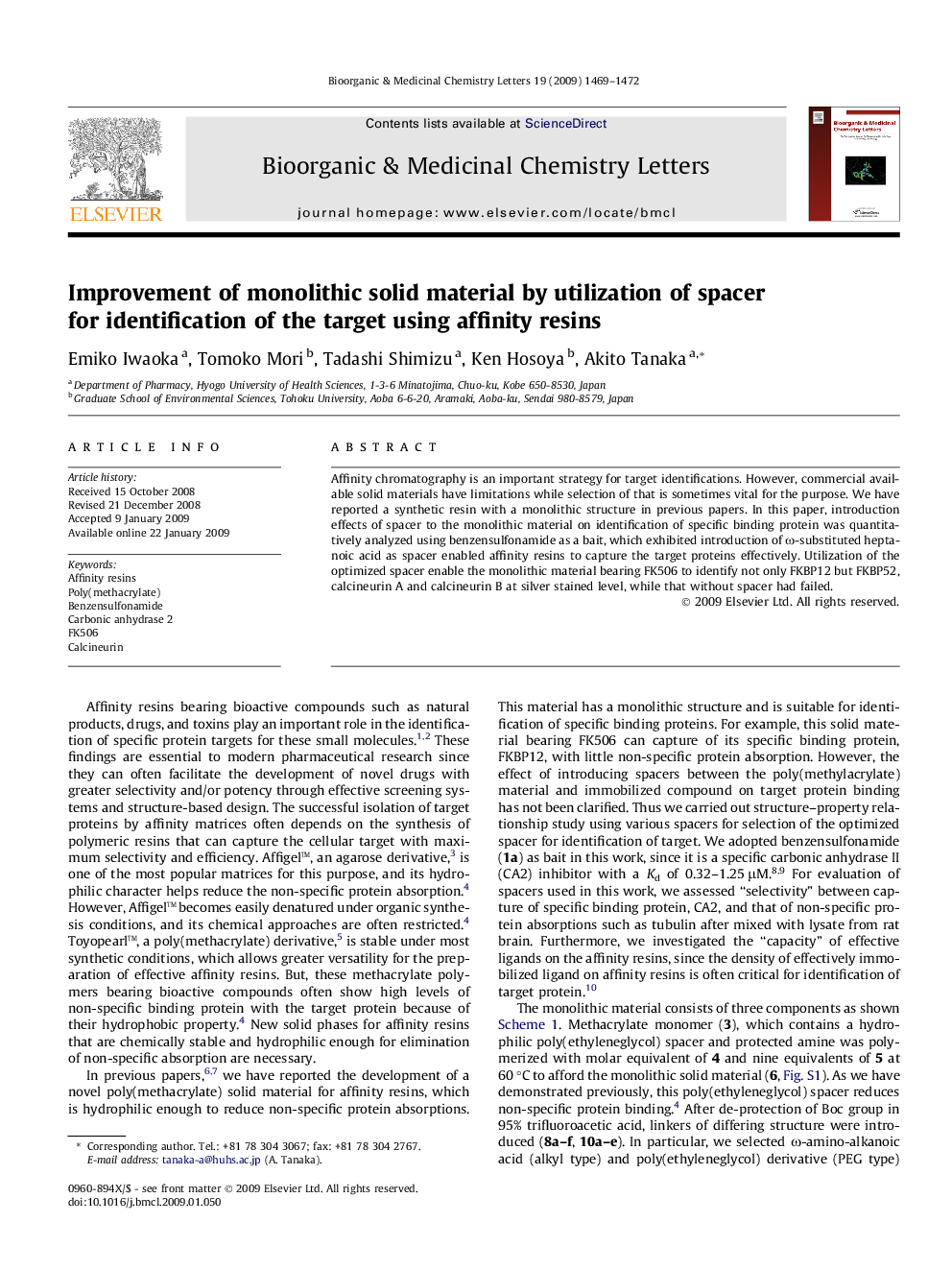| Article ID | Journal | Published Year | Pages | File Type |
|---|---|---|---|---|
| 1375581 | Bioorganic & Medicinal Chemistry Letters | 2009 | 4 Pages |
Affinity chromatography is an important strategy for target identifications. However, commercial available solid materials have limitations while selection of that is sometimes vital for the purpose. We have reported a synthetic resin with a monolithic structure in previous papers. In this paper, introduction effects of spacer to the monolithic material on identification of specific binding protein was quantitatively analyzed using benzensulfonamide as a bait, which exhibited introduction of ω-substituted heptanoic acid as spacer enabled affinity resins to capture the target proteins effectively. Utilization of the optimized spacer enable the monolithic material bearing FK506 to identify not only FKBP12 but FKBP52, calcineurin A and calcineurin B at silver stained level, while that without spacer had failed.
Graphical abstractIntroduction effects of spacer to monolithic solid material on identification of specific binding protein was analyzed using benzensulfonamide as a bait, which exhibited introduction of ω-substituted heptanoic acid as spacer enabled affinity resins effectively to capture carbonic anhydrase type 2 from rat brain lysate with little amount of non-specific protein absorption. The same material with the optimized spacer bearing FK506 successfully captured FKBP52, calcineurin A and B at silver stained level as well, while that without spacer has failed.Figure optionsDownload full-size imageDownload as PowerPoint slide
